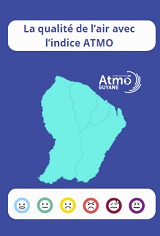Blada.com
vendredi 11 avril
Boîtes aux lettres
Courrier des lecteurs
Petites annonces
Emploi / Formation
Covoiturage
Infos citoyennes
Infos citoyennes
28/11/23
Élimination du paludisme : la Paho confirme son soutien à la Guyane
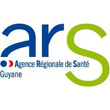 La France s’est engagée à éliminer le paludisme de son territoire dans les prochaines années. L’Organisation Panaméricaine de la Santé (OPS) est venue en Guyane, à la mi-novembre, pour rencontrer les acteurs et observer les initiatives prises pour y parvenir. Plusieurs travaux seront menés l’an prochain, notamment pour permettre une utilisation plus large de la primaquine.
La France s’est engagée à éliminer le paludisme de son territoire dans les prochaines années. L’Organisation Panaméricaine de la Santé (OPS) est venue en Guyane, à la mi-novembre, pour rencontrer les acteurs et observer les initiatives prises pour y parvenir. Plusieurs travaux seront menés l’an prochain, notamment pour permettre une utilisation plus large de la primaquine.

Il est des circonstances malencontreuses. Au moment où plusieurs responsables de l’Organisation Panaméricaine de la Santé (OPS/Paho) étaient en Guyane pour constater les efforts entrepris pour éliminer le paludisme du territoire, le Centre Délocalisé de Prévention et de Soins (CDPS) de Saint-Georges signalait plusieurs cas dans la commune. A ce jour, une vingtaine en quatre semaines. La survenue de ces nouveaux cas ne change rien à la trajectoire engagée par le gouvernement début 2022 : celle de l’élimination du paludisme du territoire à brève échéance (lire la Lettre pro du 16 février 2022).
En 2005, la Guyane comptait 4 500 cas par an. Depuis, leur nombre a été divisé par plus de trente pour s’établir entre 100 et 150 par an. Avec la survenue de six cas à Matoury, en juin, la perspective d’être certifié territoire exempt de paludisme en 2025 s’est éloignée : l’OMS exige trois années consécutives sans transmission autochtone. L’objectif est désormais de n’en avoir aucun cette année-là et les deux suivantes, pour être certifié en 2028. Pour cela, plusieurs chantiers majeurs seront menés l’an prochain, notamment en termes d’accès aux soins : pérennisation de Malakit, déploiement d’un test rapide G6PD, autorisation de mise sur le marché de la primaquine, mise en place d’une stratégie de recherche active de cas ou encore création d’un système d’information épidémio-clinique (lire ci-dessous).
Le 15 novembre, lors d’un comité de pilotage avec les acteurs de la lutte contre le paludisme en Guyane, à Matoury, Blanca Escribano, conseillère en charge de l’élimination du paludisme au siège de l’OPS, à Washington (Etats-Unis), a salué « un moment important pour tout le territoire, mais aussi pour les Amériques ». Cette rencontre ponctuait une semaine de visite sur le terrain : visite du laboratoire du Chog, de l’unité des maladies infectieuses et tropicales et du laboratoire du CHC, rencontre avec la coordination des CDPS et avec l’équipe du centre de santé de Saint-Georges, observation d’une campagne de recherche active de cas à Régina… D’ici à la fin de l’année, la Paho transmettra son rapport à l’ARS, avec ses recommandations.
« Nous sommes très fiers que la Guyane se soit engagée dans cette initiative, a conclu Solange Kobi-Jacksonm, conseillère santé familiale et communautaire à la Paho. Il y a la volonté politique mais si les acteurs n’avaient pas été impliqués, nous n’en serions pas là. Vous pouvez compter sur le soutien de l’OPS. Nous continuerons de vous apporter un soutien technique et nous serons très heureux de revenir en Guyane pour célébrer cette élimination du paludisme sur le territoire. »
 France is committed to eliminating malaria from its territory in the coming years. The Pan American Health Organization (PAHO) came to Guyana in mid-November to meet the stakeholders and observe the initiatives taken to achieve this. Several work will be carried out next year, in particular to allow wider use of primaquine.
France is committed to eliminating malaria from its territory in the coming years. The Pan American Health Organization (PAHO) came to Guyana in mid-November to meet the stakeholders and observe the initiatives taken to achieve this. Several work will be carried out next year, in particular to allow wider use of primaquine.

There are unfortunate circumstances. At the time when several officials from the Pan American Health Organization (PAHO/PAHO) were in Guyana to see the efforts undertaken to eliminate malaria from the territory, the Delocalized Prevention and Care Center (CDPS) of Saint-Georges reported several case in the municipality. To date, around twenty in four weeks. The occurrence of these new cases does not change anything in the trajectory undertaken by the government at the start of 2022: that of eliminating malaria from the territory in the short term (read the Professional Letter of February 16, 2022). ;
In 2005, Guyana had 4,500 cases per year. Since then, their number has been divided by more than thirty to settle between 100 and 150 per year. With the occurrence of six cases in Matoury in June, the prospect of being certified as a malaria-free territory in 2025 has become distant: the WHO requires three consecutive years without indigenous transmission. The objective is now to have none this year and the following two, to be certified in 2028. To achieve this, several major projects will be carried out next year, particularly in terms of access to care: sustainability of Malakit, deployment of a rapid G6PD test, marketing authorization for primaquine, implementation of an active case search strategy or even creation of an epidemiological-clinical information system (read below below).
On November 15, during a steering committee with stakeholders in the fight against malaria in Guyana, in Matoury, Blanca Escribano, advisor in charge of malaria elimination at PAHO headquarters in Washington (United States), welcomed “an important moment for the entire territory, but also for the Americas”. This meeting punctuated a week of field visit: visit to the Chog laboratory, the infectious and tropical diseases unit and the CHC laboratory, meeting with the CDPS coordination and with the team from the Saint health center -Georges, observation of an active case search campaign in Regina… By the end of the year, the Paho will send its report to the ARS, with its recommendations.
“We are very proud that Guyana is committed to this initiative,” concluded Solange Kobi-Jacksonm, family and community health advisor at Paho. There is the political will but if the actors had not been involved, we would not be here. You can count on the support of OPS. We will continue to provide you with technical support and we will be very happy to return to Guyana to celebrate this elimination of malaria in the territory. »
Raccourcis


passer une petite annonce

passer une annonce de covoiturage


passer une annonce d’emploi


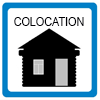
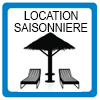

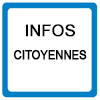

associations, postez vos actualités

participez au courrier des lecteurs
La Guyane c’est ici
La qualité de l’Air avec
ATMO
Photothèque

Lancements 2022
Vol 259 Ariane 5



